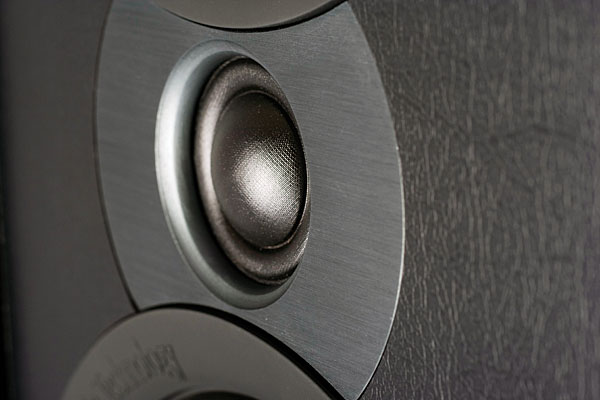Atlantic Technology AT-1 Loudspeaker Page 3

The AT-1’s performance above the bass region—say 200 Hz or so and up—doesn’t quite approach the unique, breakthrough quality that the bottom end offers, but I could find little to complain about. The highs were detailed and well balanced with the rest of the frequency range. Bright material like the now ancient but still fun Bob and Ray Throw a Stereo Spectacular on RCA sounded bright, but rarely obnoxious. (“It’s Solid Stereo!” the back jacket of this 1958 recording redundantly proclaims.) More modern recordings such as La Folia de la Spagna on Harmonia Mundi (a classical string/wind sextet supplemented by hilariously out-of-left-field birds, cars, church bells, and the occasional kazoo) sounded crystal clear and detailed. In other words, the AT-1’s top end did exactly what it’s supposed to do, without a fuss. Given my druthers, I’d ask for a bit more sparkle and airiness at the very top, but the lack of unnatural fizz or sizzle that often comes with these qualities more than compensates.
The Atlantics’ imaging was slightly broader and more relaxed than some of its competitors—though still very good. In my experience, imaging (like the ultimate effectiveness of the bass) is highly dependent on the room and the location of the speakers and listener. While they weren’t compelling, both the imaging and sense of depth were very good.
Through the midrange, the Atlantics were natural sounding and uncolored. The overall balance was full-bodied, with an evenly balanced foundation in the midbass and lower midrange. Well-recorded vocals sounded exactly as they should, with no boxiness, edginess, excessive sibilance, or bloat. If I had to characterize the AT-1’s perspective, I’d say that it sounded just a little forward, particularly in comparison to the laid-back presentation common to many audiophile speakers.
Flaws? No speaker is perfect, of course. I’ve already touched on a hint of the edge that had bothered me in the first samples of the speaker. But it was rare and only intruded at levels higher than I would ever choose to listen. At similar elevated levels, the sound also had a tendency to become a little congested with highly complex material, particularly symphony orchestra at full tilt. This type of music is by far the most difficult to record and reproduce. In the AT-1’s favor, I found many notable exceptions here, including the CD soundtracks of Glory and Kingdom of Heaven, both of which knocked me out with their breadth, depth, detail, and natural balance.
Conclusions
If the Atlantic Technology AT-1 has a major flaw as far as home theater is concerned, it would have to be the lack of a matching center channel and surrounds. But I’m certain those will come eventually (a bookshelf H-PAS model is already in the works).
In the meantime, if you’re in the market for a new set of two-channel speakers around which you eventually plan to build a complete surround array—or even just a set of superb two-channel speakers—the AT-1 has an amazing bottom end combined with other qualities that will put many a more expensive speaker to shame. It deserves a place high on your audition list.

























































